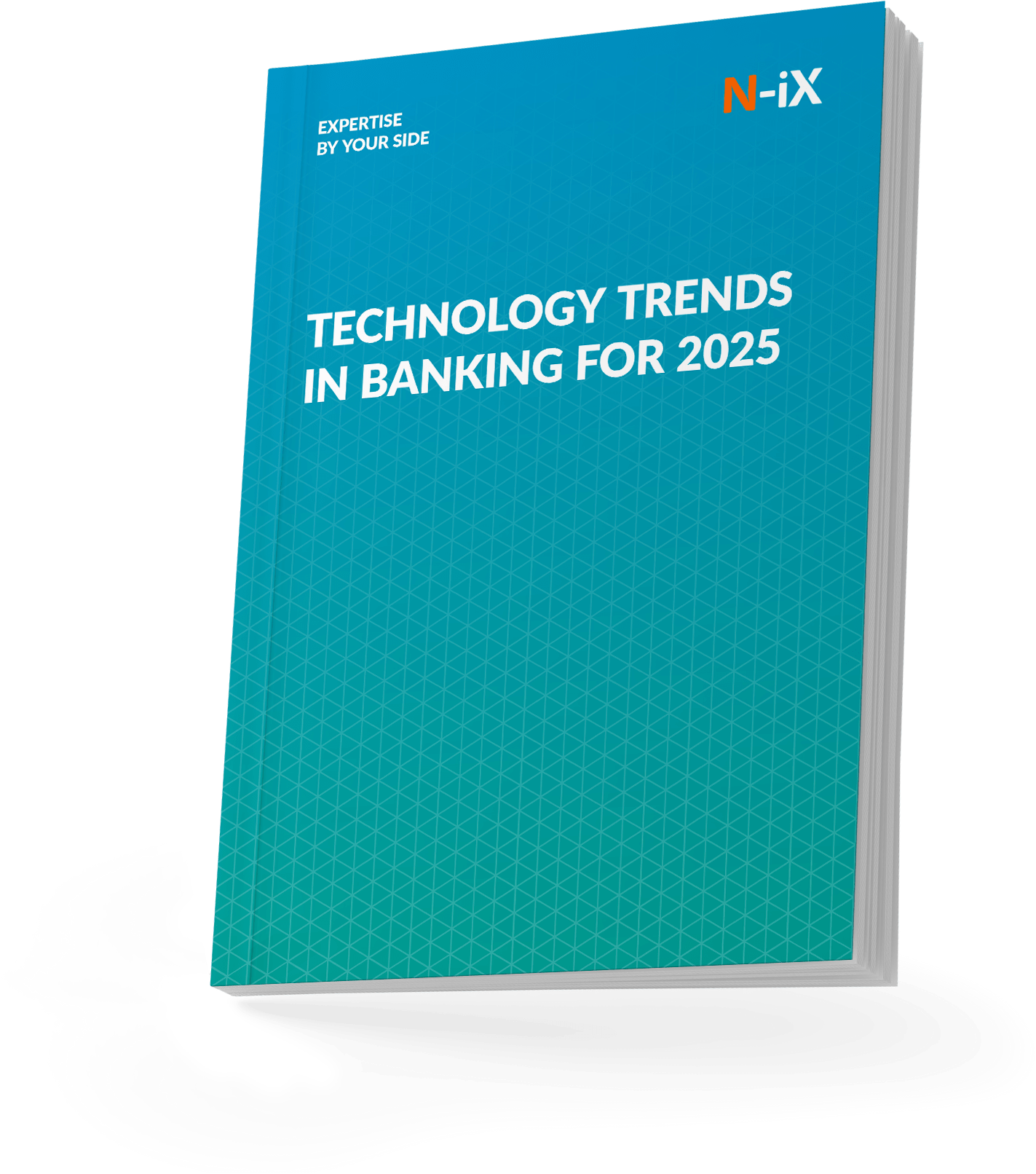To stay relevant, all financial institutions must undergo core banking modernization. The increasing sophistication of financial software development and the evolving demands of consumers require banks to stay up-to-date and take advantage of modern technology to boost operational efficiency and deliver better services. Yet, the task is daunting as core banking systems are the backbone of banking software, handling everything from transactions to customer data management. Any disruption during modernization could lead to service outages, security breaches, or data loss, severely damaging customer trust and regulatory compliance. Let’s explore a roadmap for core banking modernization that will help minimize risk and ensure the project’s success.
Why is core banking modernization necessary?
The core banking system profoundly shapes how a financial institution operates. It centralizes key functions like account management, loan processing, and payments. As a result, the system's efficiency and flexibility directly impact the speed and reliability of all customer-facing services. An up-to-date core banking system is crucial for a financial institution's ability to deliver responsive, secure, and innovative products and services. Core banking modernization rids the organization of a set of issues:
Limited digital services
Old systems often lack the flexibility to integrate with modern mobile banking and third-party services. This can frustrate customers who expect convenient, real-time services and seamless transactions across channels. According to Gartner, 47% of banking customers see a lack of digital services as the number one reason to change their bank [1].

Inefficient operations
Legacy-core banking systems are often built on older programming languages and technologies, making them slow and difficult to maintain. Banks may struggle with processing high transaction volumes or implementing efficient workflows, leading to operational delays, higher costs, and even service outages.
Compliance challenges
Regulatory requirements are constantly evolving, and banks are expected to adapt quickly to meet new standards for data security, fraud prevention, and reporting. Older systems are often inflexible, requiring complex workarounds or manual processes to meet compliance, which increases risk and operational costs. On the other hand, flexible, automated systems quickly adapt to new standards, reducing compliance risks and operational costs.
Cybersecurity vulnerabilities
Legacy systems are generally more vulnerable to cyber threats due to outdated security measures and limited ability to implement advanced protective protocols. Many older systems may not support the latest encryption methods, patch deployment, or up-to-date security models. This vulnerability puts sensitive customer information at higher risk, potentially leading to financial and reputational damage for the bank.
Costly maintenance
Maintaining an outdated core banking system requires specialized skills, which are harder to find as fewer IT professionals are trained in legacy programming languages and systems. Nearly half of banking CFOs in the US reported challenges in recruiting talent within the banking sector [2]. Moreover, Gitnux finds that out of the banks that did not undergo modernization, the average spending on the core banking system makes up 78% of their IT budget [3]. Maintenance is costly and time-consuming, diverting resources from strategic innovation and customer-facing improvements. Organizations that have modernized their core banking systems can reduce maintenance costs, access a larger talent pool, and focus on innovation, unlike those with outdated, resource-draining legacy systems.

Slow product development
Slow product development is a common issue with outdated core banking systems. Legacy systems lack modular architecture, so even a small change often requires complex programming and testing across multiple system areas. Additionally, complications with third-party integration require an extra step of developing middleware to use a feature; in contrast, an organization that underwent modernization would simply link an API.

Roadmap for core banking modernization with minimal risk
Keep reading: Software modernization: when, why, and how to part with legacy systems
Developing a core banking modernization strategy ensures banks have a clear roadmap to guide the complex transformation process, reducing risks and aligning the project with business goals. It helps prioritize resources, streamline decision-making, and identify the best approt's a full system replacement, phased migration, or hybrid solution—tailored to the bank's specific needs. These are the steps of modernization that will help minimize risk and achieve the most efficient and future-proof results:

1. Create a dedicated modernization office
A Core Modernization Program Office (CMPO) serves as the central hub for managing a bank’s core system upgrade, ensuring the project is aligned with strategic goals, stays within budget, and meets deadlines.
Its functions include project planning, cross-functional coordination, risk management, and financial oversight. The CMPO facilitates collaboration between departments, manages change and communication efforts, oversees data migration, and handles the integration of new technologies. It continuously monitors progress, manages dependencies, and resolves challenges to ensure a smooth transition.
2. Modernize peripheral systems first
Modernizing the core platform alone is often insufficient; peripheral technologies like automated clearing house (ACH) platforms, fraud detection tools, and CRM systems must also be upgraded. Best practice suggests upgrading these systems before the core platform. Upgrading systems to support modern integration standards, such as RESTful APIs, microservices, and cloud-based interfaces, will reduce the risk of integration issues during migration. Moreover, launching the new systems early can deliver quick, tangible benefits that help build momentum for further modernization efforts.
Outsourcing the development of new solutions is often more efficient than building them in-house. N-iX supports banks in achieving their objectives by modernizing existing systems and developing innovative solutions. With over 200 financial software experts, N-iX has deep expertise in the complexities of core banking modernization, ensuring seamless navigation of technical challenges and regulatory requirements.
3. Conduct data assessment, mapping, transformation, and QA
A transition to a new core banking system starts with a comprehensive inventory of the bank's existing data. This includes customer data, transaction records, product information, compliance records, financial reports, and historical archives. The goal is to understand the scope of data that needs migration and identify where it resides across various databases and legacy systems.
Next comes data mapping, matching fields in the existing system to those in the new core banking system. This ensures seamless data migration without corruption or misalignment, reducing the risk of data loss or errors that could affect customer accounts. Before migration, banks must clean and transform data to match the new system's formats and structures, checking for inconsistencies and duplicates.
Data from legacy systems often needs transformation to fit the new core system's data model. This might involve reformatting data fields, converting data types, or recalculating values to align with the new system's requirements.
After mapping, cleaning, and transforming data, banks must conduct rigorous quality assurance testing. Test migrations are run on a small subset of records to verify correct data mapping and transformation, identifying potential issues before full-scale migration. Next, data in the new system is compared against the original to ensure no records are missing and data accuracy is maintained. Finally, banks simulate high transaction volumes to confirm the new system can handle the data load without performance degradation. These thorough testing procedures help ensure a smooth transition to the new core banking system.
N-iX has extensive experience migrating data from on-premises servers to cloud platforms. This involves setting up the necessary infrastructure, implementing disaster recovery plans, and ensuring a seamless transition. For instance, we successfully assisted a large international bank with over 260 branches in migrating its extensive on-premises data centers to AWS Cloud, helping protect sensitive data and ensure business continuity in a disaster.
Related: Robust data protection and disaster recovery in banking with migration to AWS
4. Reform product offering
Core banking transformation goes far beyond updating technology—it directly impacts a bank's products, services, and internal processes. Before migrating to a new core system, banks must rationalize their product portfolios by identifying outdated or underutilized products and deciding whether to retire, consolidate, or simplify them. This reduces complexity and avoids the need to maintain parts of the legacy system solely to support existing products. Simplifying the product range also makes it easier to leverage the new system's standardization and automation features. By streamlining legacy products, banks can focus on modern, scalable solutions that better align with current customer needs.
If not managed properly, the transition to a new core system can disrupt daily operations. Banks must invest in training programs, hire or engage additional talent, and inform management of the modernization roadmap. Moving to a new system may require new technical skills, such as proficiency with cloud-based platforms, data analytics, or AI and ML.
N-iX has a comprehensive portfolio of services designed to help banks improve performance, optimize operational workflows, minimize regulatory risks, and meet compliance requirements.
More on the topic: Success Story: Facilitating secure neobank transformation
5. Carry out the transition
One of the most significant challenges of core banking modernization is managing the migration of critical functions without disrupting day-to-day operations. Banks have to decide whether they are willing to introduce new systems gradually or perform a one-time switch.
Both approaches have their advantages, and the choice depends on the bank’s risk tolerance, available resources, and strategic goals. A phased approach also has drawbacks compared to a total one-time replacement, also called “big bang.” Phased migration typically takes longer to complete, increasing the total cost and potentially leaving banks in a transitional state for years. From a service perspective, achieving real-time data updates between the two systems can be challenging, notably if the legacy system lacks support for modern integration technologies such as APIs.
On the other hand, switching all banking operations to a new core system at once creates a high risk of system failures or outages, especially if unforeseen technical issues arise. Any glitches can disrupt critical services like payments, online banking, or customer support.

Keeping data consistent across the old and new systems is one of the biggest challenges in a phased migration. Special middleware extracts data from the legacy system, transforms it into the required format, and loads it into the new core system. It can also synchronize data in real time, ensuring that customer information, transactions, and account updates are consistent across both old and new platforms during the transition period.
Our experts have successfully helped numerous clients stay on top of core banking modernization trends. For instance, we have assisted a leading fintech company in the UK with the development of a mobile application and customer authentication solution, as well as the implementation and support of Open Banking. This API-driven platform links financial services.
Read more: Improved time-to-market and scalability for m3connect
Wrap up
Core banking transformation is not simply a technology upgrade—it’s a strategic initiative that can transform the bank’s ability to compete in an increasingly digital landscape. Modernizing the core system enhances agility, accelerates product launches, improves customer experiences, and positions the bank for growth in the digital era.
References
- Digital Banking Experience Report, Sopra Steria 2023
- CEO and Senior Business Executive Survey, Gartner 2022
- Core banking industry report, Gitnux
Stay ahead in banking—explore 6 tech trends shaping the industry in 2025!


Success!

Have a question?
Speak to an expert




